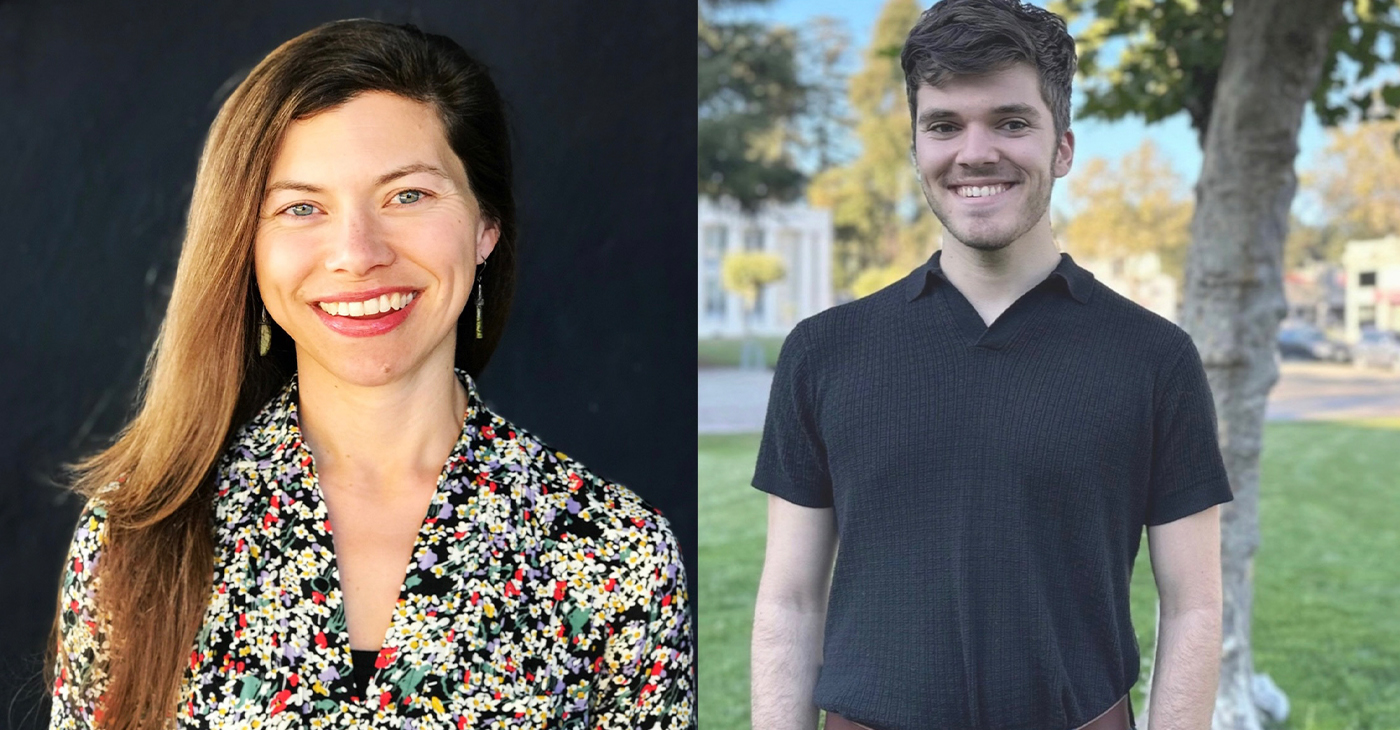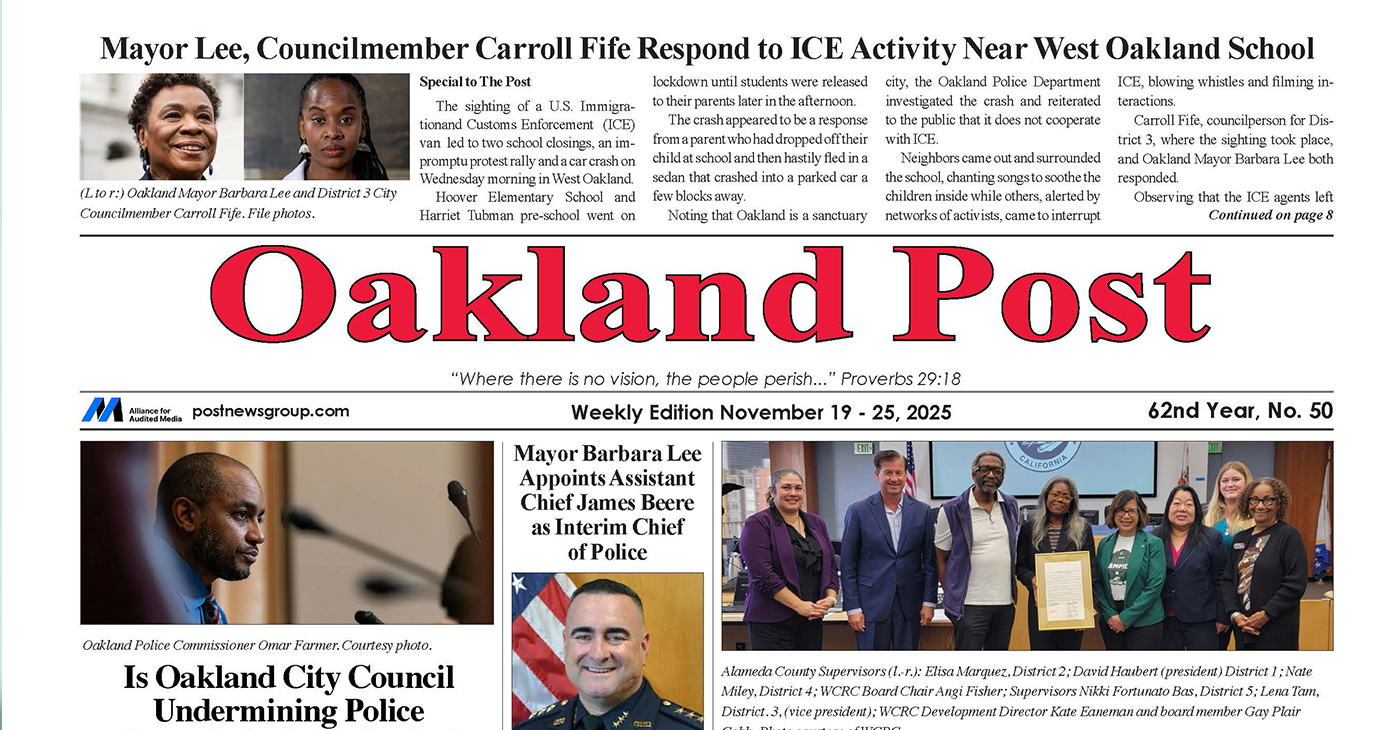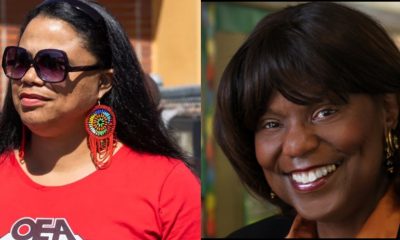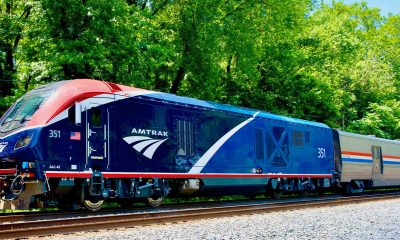Bay Area
2024 Local Elections: Q&A for Oakland Unified School Candidates, District 1
The Post reached out to the eight candidates across Districts 1, 3, 5, and 7 to see what their views are on various topics concerning the OUSD community. Below are questions and answers from District 1 candidates Rachel Latta and Ben Salop.

By Magaly Muñoz
Oakland residents will soon vote for new school board directors in four separate districts across the city.
The Post reached out to the eight candidates across Districts 1, 3, 5, and 7 to see what their views are on various topics concerning the OUSD community. Below are questions and answers from District 1 candidates Rachel Latta and Ben Salop.
Responses have been edited for length and clarity.
Q1: What do you think the biggest challenge will be to address while on the board?
Salop: The biggest challenge that we have to address as a board, and as a district, is the lack of trust that our parents and our community members have in the district.
In a lot of issues, we’ve seen that parents who are more interested are more likely to work with their students and their educators for early reading partners, which has measurable successes in increasing grade-level reading rates. So if we can get serious on [community engagement], then it’ll be a lot easier to target the budget. As well as, student success, scores, student achievement, college and career readiness, equity, inclusion, all the other issues that require community trust.
Latta: Change is hard, but fundamental change in how our district is structured is needed. I am committed to working to address systemic inequities in our schools by creating a more equitable, student centered district.
[Solutions include] making difficult and necessary budget choices that center students without reinforcing some of the harmful and inequitable decision-making of the past. We also need to address difficult, but necessary systemic inequities in our enrollment process that contribute to segregation and uneven distribution of attendance.
I will create space for community engagement outside of board meetings by taking the discussions out to the community, with regular office hours, school site listening sessions and direct outreach to families.
Q2: Given the large financial debt OUSD has and the looming threat of school closures, how will you ensure that funding for essential resources remain for students? What ideas do you have that do not include closing down schools?
Salop: The first thing we have to do is to listen to our students on what’s most important. We can’t have a concrete strategy to balance the budget or identify priorities by just saying we’re going to have an open conversation.
OUSD project management skills are awful. We have probably lost a ton of money in the 10s of millions of dollars in the last decade, just from poor management skills and poor administration. That is a rough guess by my own back of the envelope calculations. If we don’t figure out how we’re going to do that by auditing our dollars and appointing qualified independent project managers, we won’t be able to use our money any more effectively. And resolving that issue is one of the ways to reduce our deficit.
Latta: We need to do everything we can to protect positions that most directly impact students at our school sites. I would like to direct OUSD to thoroughly examine the scope of work for all central positions in order to understand what is duplicative and whose work is not reaching our sites as successfully as we intend. This includes talking with sites to understand the effectiveness of how these positions directly contribute to the day to day operations of our school sites and authentically contribute to student success and well-being.
As a board member, I will create space for community engagement outside of board meetings by taking the discussions out to the community, with regular office hours, school site listening sessions and direct outreach to families.
Q3: Students have reported feeling as though there is not enough inclusivity amongst their peers, often feeling a divide with those of other race and ethnic backgrounds. What do you think is the best way to foster an environment where students are not feeling excluded because of their differences to peers?
Salop: The first thing to do is to look at our curriculum and see how our school sites and what we’re teaching our students is helping to perpetuate this issue.
What I like to do, and what I will continue to do, is to communicate with students and parents and talk to them and let their approaches and ideas drive the policy making of the district. [I’ve participated] in an OUSD-wide advisory body with students from every single school, and that was a way for us to have these conversations and think about the ways in which schools and students were divided, and how that created a culture of intolerance. And I think supporting that measure and expanding it across our schools is really important just getting our students to work more closely.
Latta: We need to prioritize explicit site-based professional development opportunities for teachers and all staff. We also need to create concrete opportunities for students to learn from each other and about each other in the school day, including building the social-emotional tools needed for students to understand what inclusively really looks like in peer relationships.
Finally, schools should focus efforts on finding ways for students to connect through common interests, such as sports or the arts, and use them as a tool for connection for students from different backgrounds.
Alameda County
Seth Curry Makes Impressive Debut with the Golden State Warriors
Seth looked comfortable in his new uniform, seamlessly fitting into the Warriors’ offensive and defensive system. He finished the night with an impressive 14 points, becoming one of the team’s top scorers for the game. Seth’s points came in a variety of ways – floaters, spot-up three-pointers, mid-range jumpers, and a handful of aggressive drives that kept the Oklahoma City Thunder defense on its heels.

By Y’Anad Burrell
Tuesday night was anything but ordinary for fans in San Francisco as Seth Curry made his highly anticipated debut as a new member of the Golden State Warriors. Seth didn’t disappoint, delivering a performance that not only showcased his scoring ability but also demonstrated his added value to the team.
At 35, the 12-year NBA veteran on Monday signed a contract to play with the Warriors for the rest of the season.
Seth looked comfortable in his new uniform, seamlessly fitting into the Warriors’ offensive and defensive system. He finished the night with an impressive 14 points, becoming one of the team’s top scorers for the game. Seth’s points came in a variety of ways – floaters, spot-up three-pointers, mid-range jumpers, and a handful of aggressive drives that kept the Oklahoma City Thunder defense on its heels.
One of the most memorable moments of the evening came before Seth even scored his first points. As he checked into the game, the Chase Center erupted into applause, with fans rising to their feet to give the newest Warrior a standing ovation.
The crowd’s reaction was a testament not only to Seth’s reputation as a sharpshooter but also to the excitement he brings to the Warriors. It was clear that fans quickly embraced Seth as one of their own, eager to see what he could bring to the team’s championship aspirations.
Warriors’ superstar Steph Curry – Seth’s brother – did not play due to an injury. One could only imagine what it would be like if the Curry brothers were on the court together. Magic in the making.
Seth’s debut proved to be a turning point for the Warriors. Not only did he contribute on the scoreboard, but he also brought a sense of confidence and composure to the floor.
While their loss last night, OKC 124 – GSW 112, Seth’s impact was a game-changer and there’s more yet to come. Beyond statistics, it was clear that Seth’s presence elevated the team’s performance, giving the Warriors a new force as they look to make a deep playoff run.
Activism
Oakland Post: Week of November 26 – December 2, 2025
The printed Weekly Edition of the Oakland Post: Week of November 26 – December 2, 2025

To enlarge your view of this issue, use the slider, magnifying glass icon or full page icon in the lower right corner of the browser window.
Activism
Oakland Post: Week of November 19 – 25, 2025
The printed Weekly Edition of the Oakland Post: Week of November 19 – 25, 2025

To enlarge your view of this issue, use the slider, magnifying glass icon or full page icon in the lower right corner of the browser window.
-

 Activism3 weeks ago
Activism3 weeks agoOakland Post: Week of November 12 – 18, 2025
-

 Activism4 weeks ago
Activism4 weeks agoOakland Post: Week of November 5 – 11, 2025
-

 Activism2 weeks ago
Activism2 weeks agoIN MEMORIAM: William ‘Bill’ Patterson, 94
-

 Activism3 weeks ago
Activism3 weeks agoHow Charles R. Drew University Navigated More Than $20 Million in Fed Cuts – Still Prioritizing Students and Community Health
-

 #NNPA BlackPress3 weeks ago
#NNPA BlackPress3 weeks agoThe Perfumed Hand of Hypocrisy: Trump Hosted Former Terror Suspect While America Condemns a Muslim Mayor
-

 Bay Area3 weeks ago
Bay Area3 weeks agoNo Justice in the Justice System
-

 #NNPA BlackPress3 weeks ago
#NNPA BlackPress3 weeks agoProtecting Pedophiles: The GOP’s Warped Crusade Against Its Own Lies
-

 #NNPA BlackPress2 weeks ago
#NNPA BlackPress2 weeks agoTrump’s Death Threat Rhetoric Sends Nation into Crisis

























































